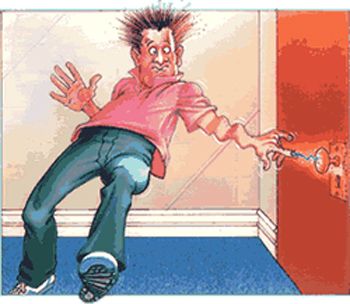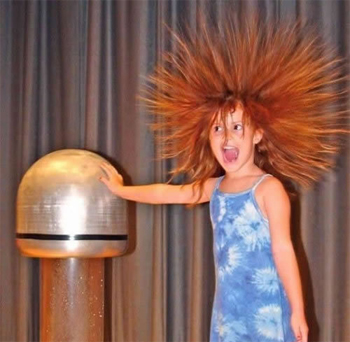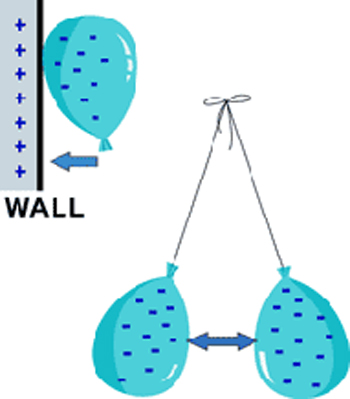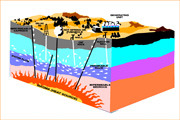Ever walked across the room to pet your dog and got a shock instead? Ever taken off your hat on a dry winter day and had a "hair raising" experience? Ever made a balloon stick on the wall by rubbing it against your clothes? Is it magic? No – it’s static electricity!
Attraction Action
To understanding static electricity you need to understand the basics of atoms and magnetism first.
All physical objects are made up of atoms. Inside an atom are protons, electrons and neutrons. The protons are positively charged, the electrons are negatively charged, and the neutrons are neutral.

Therefore, all things are made up of charges. Opposite charges attract each other (negative to positive). Like (similar) charges repel each other (positive to positive or negative to negative). Most of the time positive and negative charges are balanced in an object, which makes that object neutral.
Balancing Act
Static electricity is the result of an imbalance between negative and positive charges in an object. These charges can build up on the surface of an object until they find a way to be released or discharged.

The rubbing of certain materials against one another can transfer negative charges, or electrons. For example, if you rub your shoe on the carpet, your body collects extra electrons. The electrons cling to your body until they can be released. As you reach and touch your furry friend, you get a shock. Don't worry: it’s just the surplus electrons being released from you to your unsuspecting pet.

And what about that "hair raising" experience? As you remove your hat, electrons are transferred from hat to hair, creating that interesting hairdo! Remember, objects with the same charge repel each other. Because they have the same charge, your hair will stand on end. Your hairs are simply trying to get as far away from each other as possible!

When you rub a balloon against your clothes and it sticks to the wall, you are adding a surplus of electrons (negative charges) to the surface of the balloon. The wall is now more positively charged than the balloon. As the two come in contact, the balloon will stick because of the rule that opposites attract (positive to negative).
Related Stories:

































